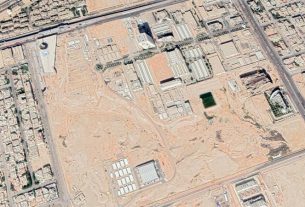A small mission aimed at testing technology capable of detecting radio waves originating from over 13.4 billion years ago will arrive on the far side of the Moon in 2025. Below are key takeaways from this lunar project.
The Universe before Light
Before light Our universe as we know it began approximately 13.8 billion years ago with the Big Bang. At that time, Earth was extremely hot and dense before expanding very quickly while cooling, leading to subatomic particles, atoms, molecules, and concentrations of matter forming concentrations that eventually led to stars appearing.
At that time, most of the universe was comprised of neutral hydrogen (hydrogen atoms with electrons orbiting their nuclei). But newly formed stars released a vast amount of ultraviolet (UV) light whose energy interacted with nearby neutral hydrogen atoms to strip them of their electrons, ultimately turning neutral hydrogen into an ionized plasma state.
Initial studies suggested that neutral hydrogen could absorb UV light. Once it became ionized, however, this no longer occurred, meaning UV emitted by stars could travel freely throughout the universe, ending what has often been termed the “Dark Ages”.
This period preceded the formation of stars and galaxies. At that time, conditions were very different from what we experience now—there was almost total darkness throughout space-time at that time! Scientists are still puzzled over what exactly went on during this mysterious time period that has since passed us by; unfortunately, we can never truly “see” it ourselves.
Astronomers’ mission to explore the dark side of the Moon
Astronomers are turning to radio waves in order to gain more knowledge about this part of space history, specifically due to neutral hydrogen’s ability to absorb part of cosmic microwave background radiation during the Dark Ages, leading to a decrease in radio waves at frequencies between 0.5 and 50 megahertz during that era. Researchers hope that by isolating this change in frequency, they may capture an image of this mysterious period in time.
NASA researchers will launch the Lunar Surface Electromagnetic Experiment-Night mission, known as LuSEE-Night for short, by 2025 as part of their Commercial Lunar Payloads program. American.
Researchers decided to land their machine on the far side of the moon to avoid any radiowave contamination from Earth’s atmosphere. To operate efficiently, their machine will be equipped with two pairs of antennas approximately six meters long that will unfurl upon landing.
Note that LuSEE-Night may not necessarily detect evidence from the Dark Ages; rather, it serves as a technological demonstration tool with the ultimate aim of building an even larger radio telescope.
Scientists have long advocated the establishment of a radio telescope on the far side of the Moon capable of surveying all frequencies without interference, yet its deployment presents considerable technical hurdles, thus the interest in sending such missions upstream.
LuSEE-Night will be deployed onto the Moon using a lander developed by Firefly Aerospace and is expected to operate there for 18 months.




